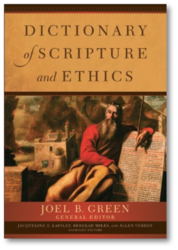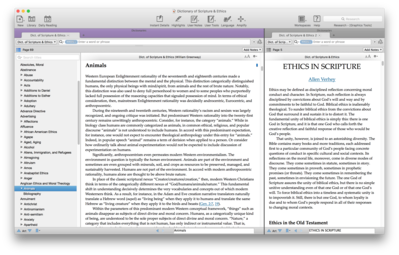THE AGE IN WHICH WE LIVE
We seem to live in an age of moral outrage—at least judging from the amount of moralizing we see on our social media feeds. It seems that every day I see a new outrage-du-jour: a politician says something foolish, political demonstrators behave badly, a rapist gets a scandalously light sentence, or an endangered gorilla is shot to protect the life of a child who climbed into its zoo enclosure. Each source of outrage then gets debated in staccato 140-character bursts. In the case of Harambe, the aforementioned gorilla at the Cincinnati Zoo, I saw people second-guessing the zoo’s decision to kill rather than tranquilize the gorilla, demanding “justice for Harambe,” publicly crucifying the child’s parents for their lack of supervision, and offering their own analysis of whether or not the child was really in danger. Everyone seemed to have an opinion about what was fundamentally an ethical question: namely, when a choice must be made between a human or animal life, which should we choose?
On the one hand, it seems odd that there should be so much moral outrage in a culture which is drifting away from the traditional “Judeo-Christian ethic” which was once its generally agreed upon standard of morality. How can there be such moral outrage when moral standards are in such a state of flux? Then again, perhaps it is precisely this lack of ethical common ground which has people shouting at each other in order to be heard. Combine that with the fact that social media now gives us all a ready platform for disseminating our various ethical viewpoints, and the current level of cacophony becomes easier to understand.
THE NEED FOR A COMMON LANGUAGE
When two people speak different languages, each is tempted to speak loudly in his own language in the hope that the other will somehow understand what is being said. Yet it is only when they begin to speak a common language that meaningful communication becomes possible. In the same way, if we are to have less moral outrage and more meaningful ethical discussion, we need to learn to understand the ethical “language” being spoken.

APPLICATION TO CURRENT EVENTS
Looking for perspective into the ethical controversy surrounding the killing of Harambe, I decided to consult this dictionary’s article on “Animals.” The discussion I found there began with a critique of an “anthropocentric” approach to Scripture which the author traced back to “Western European Enlightenment rationality”:
In place of the classic scriptural nexus “Creator/creatures/creation,” then, modern Western Christians think in terms of the categorically different nexus of “God/humans/animals/nature.”
As I read this critique, I found myself questioning the author’s interpretive lens. At times it seemed he had simply swapped an anti-anthropocentric lens for an anthropocentric one. Nevertheless, his critique did lead me to question how much I read Scripture through an anthropocentric lens and gloss over passages which affirm the common creatureliness of animals and humans.
The author went on to survey three “non-anthropocentric” approaches to interpreting the Bible, which was also helpful in understanding the perspectives of those who are most troubled by the zoo’s decision to kill a gorilla to save a child.
While I found the “Animals” article helpful, I was surprised that it featured almost no discussion of the Scriptural teaching that mankind was created in the “image of God.” So I turned to the “Image of God” article, which was longer and more comprehensive than the article on animals. Once again, I found that the author of this article seemed to be using an interpretive lens that is different than my own. Yet again, that was a good thing. I didn’t necessarily agree with the conclusions he came to from his survey of the relevant biblical texts, but I did feel that he had challenged some of my assumptions and given me further food for thought.

Click/tap on the image above for a larger view of The Dictionary of Scripture & Ethics
A HELPFUL AND CHALLENGING REFERENCE WORK
The articles in the Dictionary of Scripture and Ethics helped me think about the implications of various biblical texts for a specific ethical dilemma, while challenging me to identify and question my own interpretive assumptions. In short, they helped me become conversant in other interpretive and ethical “languages.” Any time I do that, I become less likely to shout my own ethical viewpoints at those who aren’t even speaking my language. In a pluralistic society where ethical norms are in a state of flux, that is a very helpful corrective.
Dictionary of Scripture and Ethics
Regular Price $54.90


